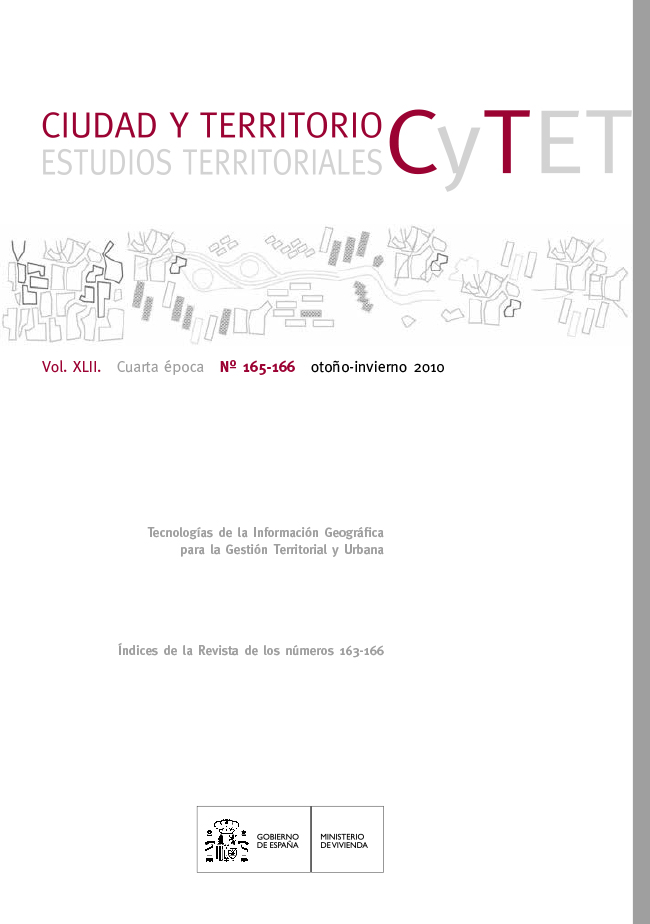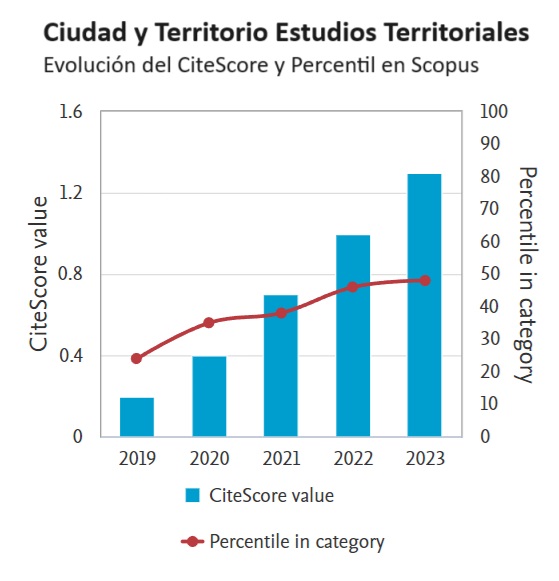Aplicaciones de los SIG al estudio de amenazas naturales asociadas al retroceso de glaciares y desprendimientos
Palabras clave:
Sistemas de Información Geográfica, riesgos naturales, retroceso glaciar, desprendimientosResumen
Los Sistemas de Información Geográfi ca se han convertido en un instrumento imprescindible
en los trabajos de prevención de riesgos naturales. Su uso abarca todas las fases del análisis:
desde la obtención, integración y tratamiento de la información hasta la conversión de esa información
en un conocimiento concreto sobre las amenazas que sufre un determinado territorio y su vulnerabilidad
ante las catástrofes naturales. En la actualidad, los SIG son instrumentos imprescindibles en la
elaboración de una cartografía temática que exprese la peligrosidad y vulnerabilidad de un territorio
concreto. Una correcta determinación del riesgo depende de la calidad de los mapas de peligrosidad,
tanto de peligrosidad potencial, mapas elaborados a partir de simulaciones numéricas, como geocronológica,
mapas basados en el estudio de periodos de recurrencia. El trabajo desarrolla dos ejemplos
en los que el empleo de los SIG, en la fase inicial del estudio del riesgo, facilita la obtención de la información
adecuada para la realización de mapas de peligrosidad. Los dos casos de estudio demuestran
cómo los SIG se imbrican en el proceso metodológico de investigación sobre la prevención de
riesgos naturales, en perfecta armonía con otras técnicas, como son las de campo o la fotointerpretación
convencional, y son además de enorme ayuda en la transmisión de los resultados a los organismos
responsables de la toma de decisiones.
Descargas
Descargas
Publicado
Cómo citar
Número
Sección
Licencia
Derechos de autor 2010 N. Andrés de Pablo, L. M. Tanarro García, D. Palacios Estremera

Esta obra está bajo una licencia internacional Creative Commons Atribución-NoComercial-SinDerivadas 4.0.
Sin perjuicio de lo dispuesto en la legislación vigente sobre Propiedad Intelectual, y conforme a la misma, el/la los/las autor/a/es/as que publiquen en CyTET cede/n a título gratuito, de modo no exclusivo y sin límite temporal al Ministerio de Transportes, Movilidad y Agenda Urbana los derechos para difundir, reproducir, comunicar y distribuir en cualquier formato actual o futuro, en papel o electrónico, la versión original o derivada de su obra bajo licencia de Creative Commons Reconocimiento-NoComercial-SinObraDerivada 4.0 Internacional (CC BY-NC-ND 4.0), así como para incluir o ceder a terceros la inclusión de su contenido en índices, repositorios y bases de datos nacionales e internacionales, con referencia y reconocimiento en todo caso de la autoría del mismo.
Además, al realizar el envío, el/la los/las autor/a/es/as declara/n que se trata de un trabajo original en el que se reconocen las fuentes que han sido utilizadas en su estudio, comprometiéndose a respetar la evidencia científica y a no modificar los datos originales para verificar o refutar una hipótesis de partida; que el contenido esencial del mismo no ha sido publicado previamente ni se publicará en ninguna otra obra o revista mientras esté en proceso de evaluación en la revista CyTET; y que no se ha remitido simultáneamente a otra publicación.
Los autores deben firmar un Formulario de Cesión de Derechos, que les será enviado desde la Secretaría de CyTET una vez se acepte su artículo para ser publicado.
Con el objetivo de favorecer la difusión del conocimiento, CyTET se adhiere al movimiento de revistas de Open Access (OA) y entrega la totalidad de sus contenidos a diversos índices, repositorios y bases de datos nacionales e internacionales bajo este protocolo; por tanto, la remisión de un trabajo para ser publicado en la revista presupone la aceptación explícita por parte del autor/a de este método de distribución.
Se anima a las/os autoras/es a reproducir y alojar sus trabajos publicados en CyTET en repositorios institucionales, páginas web, etc. con la intención de contribuir a la mejora de la transferencia del conocimiento y de la citación de dichos trabajos.








 Enlace a CyTET en Linkedin
Enlace a CyTET en Linkedin